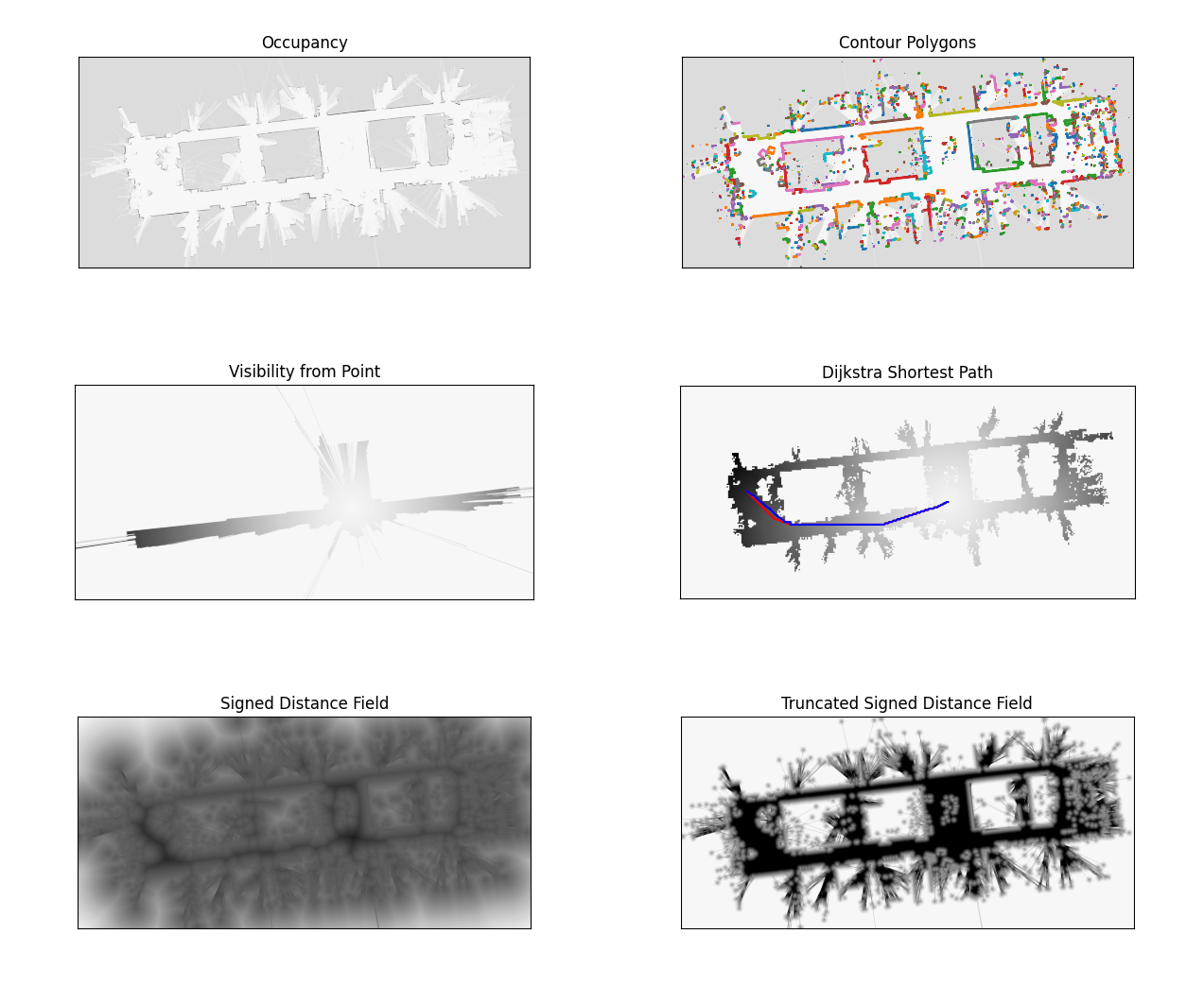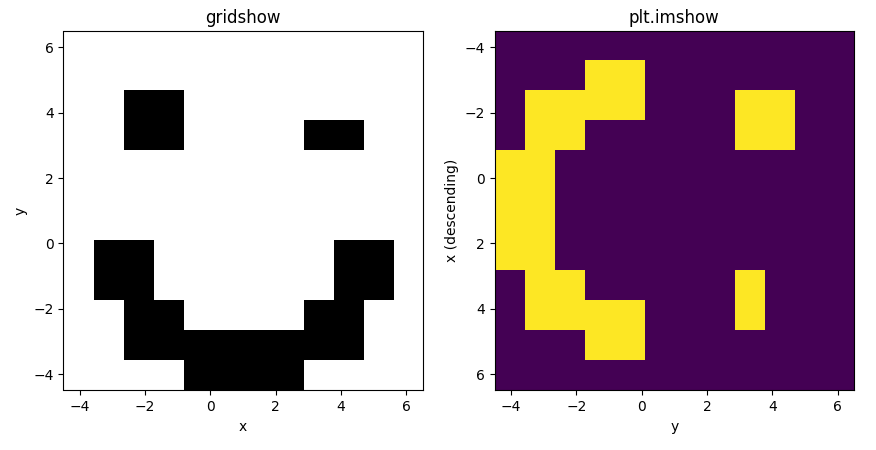- appended which human is visible or not
- appended Pure-Pursuit (reference code: repo )
- appended Occupancy grid map (reference code: repo )
e.g. (in CrowdNav[https://github.com/vita-epfl/CrowdNav])
class MYClass():
def __init__(self):
pass
def sort_humans(
self,
robot: Robot,
humans: List[Human]
):
## sorting human by descending_order for make Occupancy
distances = []
for human in humans:
dist = np.linalg.norm([human.px- robot.px, human.py - robot.py])
distances.append(dist)
descending_order = np.array(distances).argsort()
humans = np.array(humans)[descending_order]
humans = humans.tolist()
return humans
def _cb_lidar(
self,
robot: Robot,
humans: List[Human,],
flat_contours: np.ndarray,
distances_travelled_in_base_frame: np.ndarray
) -> Tuple[np.ndarray, np.ndarray, np.ndarray, List[bool]]:
humans = self.sort_humans(robot,humans)
lidar_pos = np.array([robot.px, robot.py, robot.theta], dtype=np.float32)
ranges = np.ones((self.n_angles,), dtype=np.float32) * self.max_range
angles = np.linspace(self.scan_min_angle,
self.scan_max_angle-self.scan_increment,
self.n_angles) + lidar_pos[2]
other_agents = []
for i, human in enumerate(humans):
pos = np.array([human.px, human.py, human.theta], dtype=np.float32)
dist = distances_travelled_in_base_frame[i].astype(np.float32)
vel = np.array([human.vx, human.vy], dtype=np.float32)
if self.lidar_legs:
agent = CSimAgent(pos, dist, vel, type_="legs", radius = self.leg_radius)
else:
agent = CSimAgent(pos, dist, vel, type_="trunk", radius=human.radius)
other_agents.append(agent)
self.converter_cmap2d.render_agents_in_lidar(ranges, angles, other_agents, lidar_pos[:2])
which_visible = [agent.get_agent_which_visible() for agent in other_agents] or which_visible = [agent.visible for agent in other_agent]
return ranges, angles, distances_travelled_in_base_frame, which_visible
get_agent_which_visible or visible must be called after render_agents_in_lidar
sort_humans must be used, before input humans into render_agents_in_lidar (i recommend that you should use sort_humans human step and human generate function)
class MYClass():
def __init__(self):
self.look_ahead_planner = LookAheadPlanner(look_ahead_dist = 2.5)
def _cb_subgoal(self, robot: Robot, path:np.ndarray):
path = path.astype(np.float32)
position = np.array([robot.px, robot.py], dtype = np.float32)
sub_goal = self.look_ahead_planner.find_subgoal(path, position)
return sub_goal
OGMs.mp4
class MYClass():
def __init__(self):
self.occ_map = OccupancyGridMap(xy_resolution = 0.05, map_size = 11.2)
def lidar_to_occ(self, ranges: np.ndarray, angles: np.ndarray) -> np.ndarray:
occ = self.occ_map.generate_ray_casting_grid_map(ranges.astype(np.double), angles.astype(np.double))
return occ
def visualize_occ(self, ranges: np.ndarray , angles: np.ndarray) -> np.ndarray:
occ = self.lidar_to_occ(ranges, angles)
cv2.imshow('occ_map', occ)
cv2.waitkey(1)
pymap2d is a Cython-based fast toolbox for 2d grid maps.
The CMap2D class provides:
- simple xy <-> ij coordinate conversions
- implementation of the dijkstra / fastmarch algorithm
- fast 2D distance transform (ESDF)
- conversions:
- to/from polygon vertices
- from ROS occupancy map or lidar scan message
- serialization to/from dict
Note: rather than carefully designed, this codebase was chaotically grown. It is in dire need of refactoring / documentation. I hope it still proves useful.
$ pip3 install numpy==1.23.4 Cython==0.29.37
Inside this project root folder:
$ pip3 install -e .
Creating a map
from CMap2D import CMap2D
# empty map
mymap = CMap2D()
# from an array
mymap.from_array(array, origin, resolution)
# from a pgm file
mymap = CMap2D("folder", "filename")
# from a ROS message
mymap.from_msg(msg)Accessing occupancy data, origin, resolution (read-only)
# occupancy as 2d array
mymap.occupancy()
# origin: (x, y) coordinates of point (i, j) = (0, 0)
mymap.origin_xy()
# resolution: size of grid cell [meters]
mymap.resolution()Converting between grid and spatial coordinates
list_of_xy_points = np.array([[1.3, 2.3], [-1.1, -4.0], [6.4, 2.3]])
in_ij_coordinates = mymap.xy_to_floatij(list_of_xy_points)
as_indices = mymap.xy_to_ij(list_of_xy_points, clip_if_outside=True)gridshow is a convenience function, which wraps plt.imshow to intuitively visualize 2d array contents. It makes the first array dimension x axis and uses grayscale by default.
from CMap2D import gridshow
gridshow(mymap.occupancy())For more examples, see test/example_*.py


